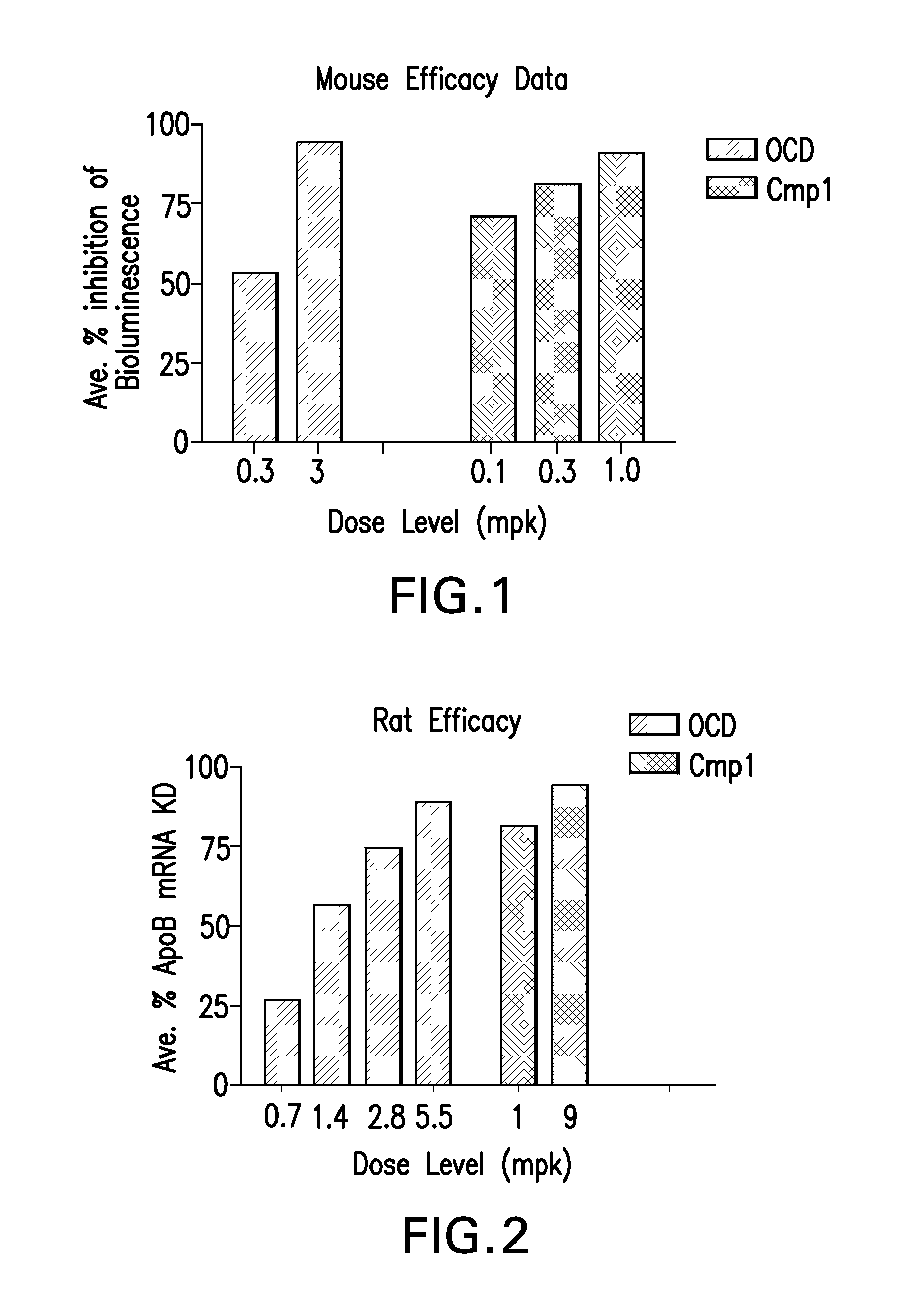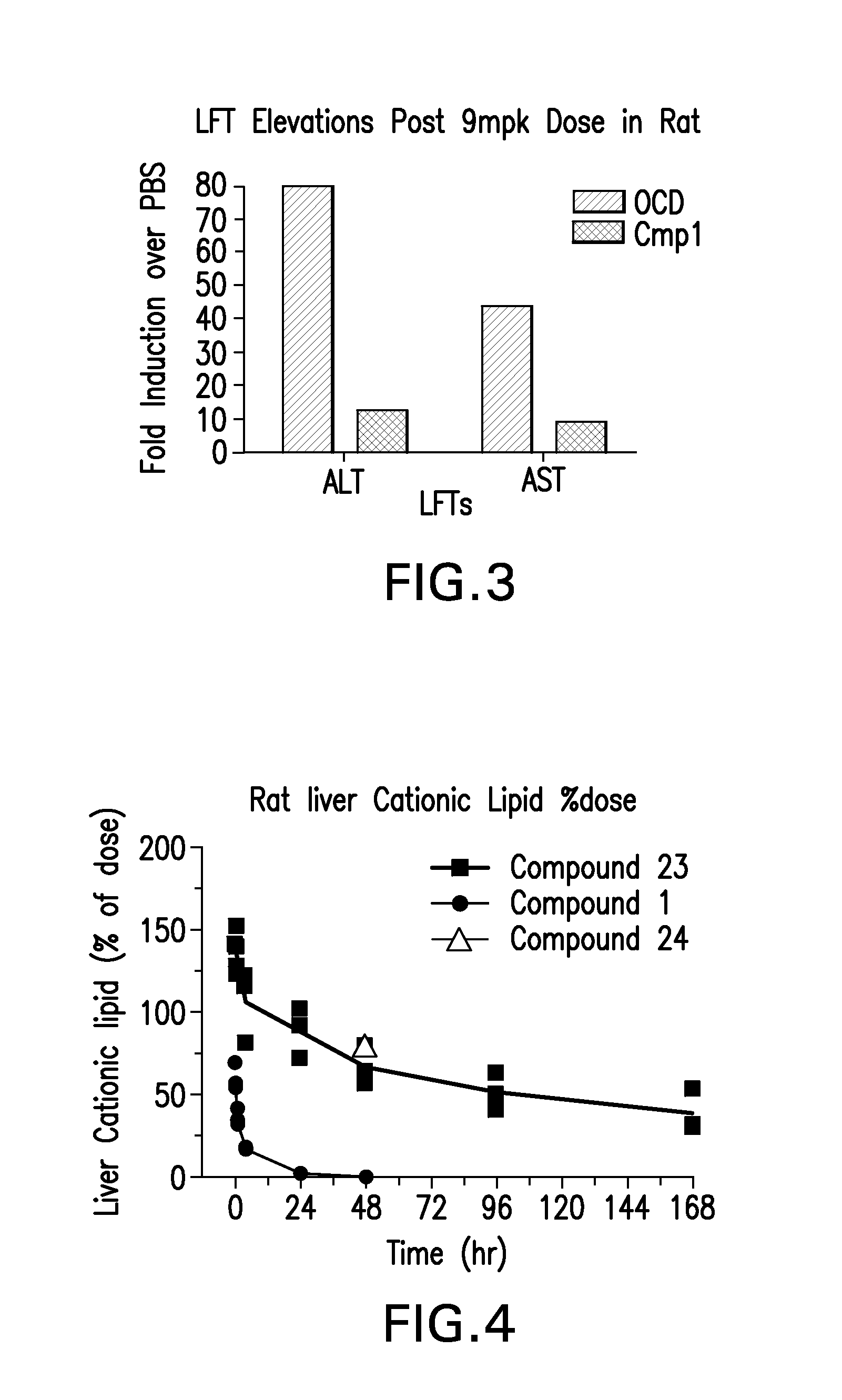Novel Low Molecular Weight Cationic Lipids for Oligonucleotide Delivery
a lipid and oligonucleotide technology, applied in the field of new cationic lipids, can solve problems such as non-optimal delivery efficiency, and achieve the effects of reducing liver toxicity, reducing lipid levels in the liver, and improving efficiency
- Summary
- Abstract
- Description
- Claims
- Application Information
AI Technical Summary
Benefits of technology
Problems solved by technology
Method used
Image
Examples
example 1
Mouse In Vivo Evaluation of Efficacy
[0138]LNPs utilizing Compounds 1-2, in the nominal compositions described immediately above, were evaluated for in vivo efficacy and induction of inflammatory cytokines in a luciferase mouse model. The siRNA targets the mRNA transcript for the firefly (Photinus pyralis) luciferase gene (Accession #M15077). The primary sequence and chemical modification pattern of the luciferase siRNA is displayed above. The in vivo luciferase model employs a transgenic mouse in which the firefly luciferase coding sequence is present in all cells. ROSA26-LoxP-Stop-LoxP-Luc (LSL-Luc) transgenic mice licensed from the Dana Farber Cancer Institute are induced to express the Luciferase gene by first removing the LSL sequence with a recombinant Ad-Cre virus (Vector Biolabs). Due to the organo-tropic nature of the virus, expression is limited to the liver when delivered via tail vein injection. Luciferase expression levels in liver are quantitated by measuring light outp...
PUM
| Property | Measurement | Unit |
|---|---|---|
| concentration | aaaaa | aaaaa |
| concentration | aaaaa | aaaaa |
| concentration | aaaaa | aaaaa |
Abstract
Description
Claims
Application Information
 Login to View More
Login to View More - R&D
- Intellectual Property
- Life Sciences
- Materials
- Tech Scout
- Unparalleled Data Quality
- Higher Quality Content
- 60% Fewer Hallucinations
Browse by: Latest US Patents, China's latest patents, Technical Efficacy Thesaurus, Application Domain, Technology Topic, Popular Technical Reports.
© 2025 PatSnap. All rights reserved.Legal|Privacy policy|Modern Slavery Act Transparency Statement|Sitemap|About US| Contact US: help@patsnap.com



